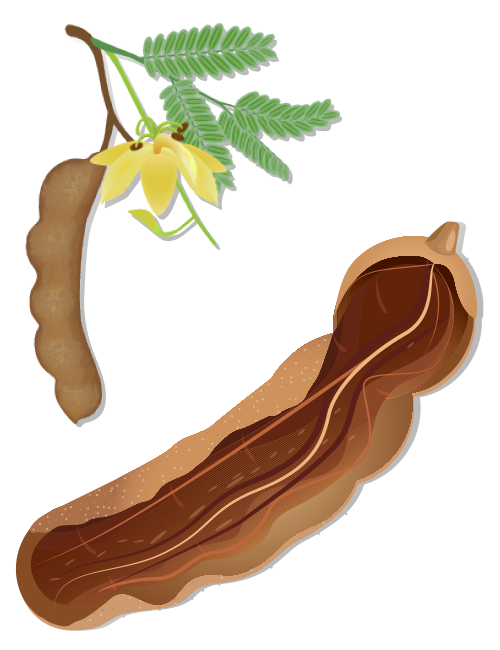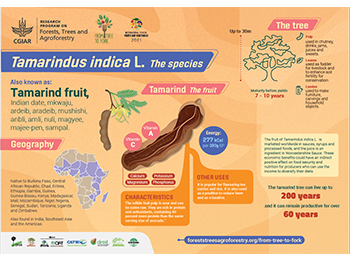Geography
Native to Burkina Faso, Central African Republic, Chad, Eritrea, Ethiopia, Gambia, Guinea, Guinea-Bissau, Kenya, Madagascar, Mali, Mozambique, Niger, Nigeria, Senegal, Sudan, Tanzania, Uganda, Zimbabwe
Also found in India, Southeast Asia and the Americas.
Uses
The edible fruit pulp of the tamarind tree is sour, has a very acidic taste and can be eaten raw. It is popular for flavouring tea, curries and rice. The pulp makes an excellent chutney as well as a pleasant, refreshing drink. In other regions, the pulp is used in the preparation of jams, juices, and sweets. Its fruit is marketed worldwide in sauces, syrups and processed foods, and the juice is an ingredient in Worcestershire Sauce. These economic benefits could have an indirect positive effect on food security and nutrition for producers who can use the income to diversify their diets.
The tree’s leaves are used as fodder for livestock including camels and goats, while they also make good mulch that helps to conserve soil and enhance fertility. It is an ideal tree for providing shade in hot areas, which could benefit agroforestry systems by protecting young crops from the harsh sunlight. The plant is also reported to have medicinal properties and can be used as a poultice to reduce fever and as a laxative.
Tamarind lumber is used to make furniture, carvings, and household objects. The evergreen habit and the beautiful flowers make it suitable for ornamental planting in parks, along roads and riverbanks.







